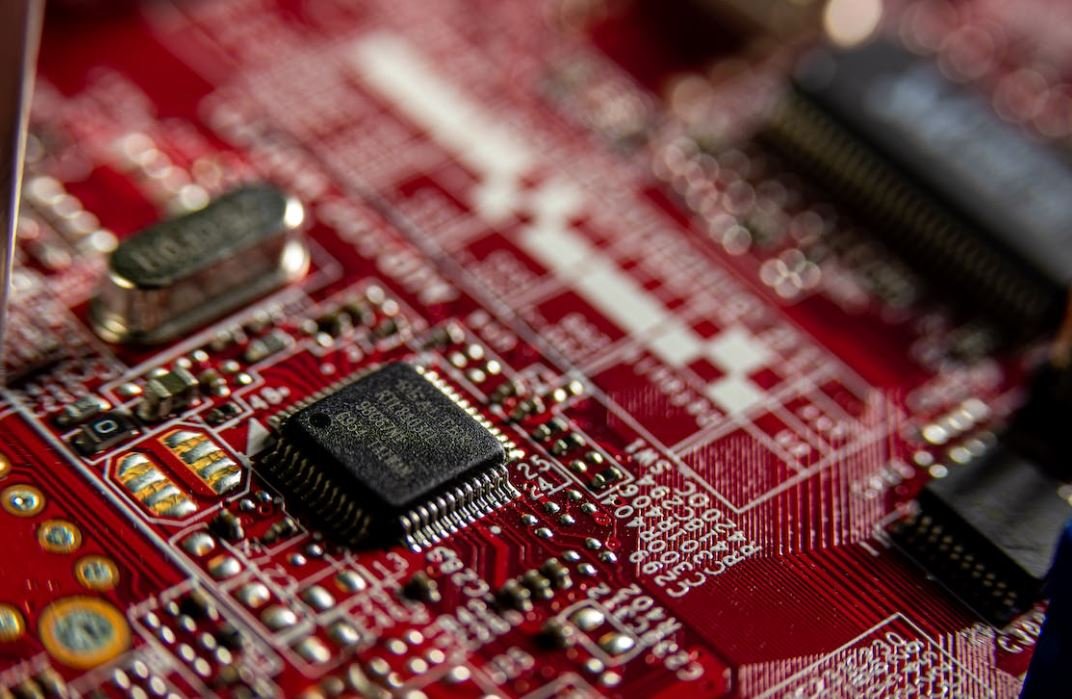Why AI Should Not Be Regulated
The field of Artificial Intelligence (AI) has been growing rapidly in recent years, with advancements in machine learning and neural networks revolutionizing various industries. As AI becomes more prevalent in society, there is an ongoing debate on whether or not it should be regulated. While concerns about ethics and safety are valid, regulating AI too early can stifle innovation and impede its potential. In this article, we will explore the reasons why AI should not be regulated.
Key Takeaways
- Regulating AI too early can hinder innovation and limit its potential.
- AI systems are complex and evolve rapidly, making it difficult to enforce regulations effectively.
- The benefits of AI outweigh the potential risks, and responsible developers prioritize safety.
**AI systems are designed to learn and adapt**, which makes them different from traditional software. They can continuously improve their performance based on data analysis and feedback. Regulating such systems brings challenges as it is challenging to predict how they will evolve and what problems they might encounter along the way.
Furthermore, **overregulation can stifle innovation**, preventing the potential benefits that AI can bring to various industries. By allowing freedom in AI development, researchers and developers can explore new possibilities and drive advancements in areas such as healthcare, transportation, and education.
The **safety concerns surrounding AI** are often raised as a reason for regulation. While it is true that some AI applications may have risks, responsible developers prioritize safety measures. Implementing regulations can create a burden for ethical developers who already strive to ensure their systems are secure and transparent.
Benefits of AI Outweigh Potential Risks
AI has already demonstrated significant benefits across a wide range of domains. By leveraging large datasets and complex algorithms, AI systems can improve healthcare diagnosis, optimize energy consumption, enhance cybersecurity, and automate tedious tasks. The potential for AI to address complex societal challenges is immense.
**The use of AI in healthcare** has the potential to revolutionize patient care. AI algorithms can analyze medical data, provide accurate diagnoses, and even predict disease risks. This can lead to earlier detection, more precise treatment plans, and improved patient outcomes.
**AI-powered automation** can streamline processes and increase productivity. By automating repetitive tasks, organizations can free up valuable human resources to focus on higher-value work that requires creativity and problem-solving skills. This can lead to increased efficiency and economic growth.
| AI Applications | Benefits |
|---|---|
| Healthcare | Improved diagnosis, personalized treatment, and enhanced patient care. |
| Transportation | Enhanced safety, traffic optimization, and autonomous vehicles. |
Challenges in Regulating AI
**Enforcing regulations effectively** in the complex and rapidly evolving field of AI poses significant challenges. Traditional regulatory frameworks may not be suitable for AI systems that learn and adapt over time. The knowledge cutoff dates often required for regulations would be impractical, given the continuous advancement and evolution of AI algorithms.
**International cooperation** is crucial for AI regulation. As AI transcends national borders, regulations must be harmonized to avoid creating barriers to innovation. Collaborative efforts can facilitate the establishment of ethical guidelines, standards, and frameworks that balance innovation and safety.
| Country | AI Regulation Approach |
|---|---|
| United States | Voluntary guidelines and industry self-regulation. |
| European Union | Proposed regulations for AI, including strict rules for high-risk applications. |
Innovation Requires Freedom
**Innovation is the driving force behind AI advancement**. By allowing developers freedom to explore and experiment, breakthroughs in AI technology can occur. Overregulation would hinder the creative processes necessary for developing AI applications that can solve complex problems and improve society as a whole.
While reasonable ethical guidelines to ensure AI systems are transparent and safe should be encouraged, the freedom to innovate and push boundaries should not be stifled by premature regulation.
Conclusion
Given the potential benefits AI offers to society, it is crucial to strike a balance between fostering innovation and addressing any associated risks. While the ethical and safety concerns surrounding AI are valid, overregulation can impede progress and limit the positive impact AI can have. By allowing responsible developers to continue driving advancements and prioritizing safety measures, we can leverage AI to address complex challenges and improve various aspects of our lives.

Common Misconceptions
AI Should Not Be Regulated
There are several common misconceptions surrounding the topic of why AI should not be regulated.
- AI cannot surpass human intelligence
- Regulation stifles innovation
- AI is too complex to regulate effectively
AI is Not Capable of Causing Harm
One misconception is that AI is not capable of causing harm and therefore does not need regulation.
- AI can make biased decisions
- AI can perpetuate inequality
- AI can invade privacy
AI Regulation Hinders Progress
Another misconception is that regulating AI hinders progress and slows down advancements in the field.
- Regulation can address potential ethical concerns
- Regulation promotes trust and adoption of AI
- Regulation can foster responsible development of AI
AI Systems Are Already Self-Regulating
Some people believe that AI systems are already capable of self-regulation and do not require external oversight.
- AI systems need human intervention for oversight
- Self-regulation may not consider societal impacts
- External oversight ensures accountability and transparency
Regulating AI Limits its Potential
A final misconception is that regulating AI limits its potential and inhibits its capabilities.
- Regulation can provide a framework for responsible AI development
- Regulation can help address safety concerns
- Regulation can prevent misuse and exploitation of AI

The Impact of AI in Healthcare
In recent years, AI has made significant advancements in healthcare, revolutionizing the way medical professionals diagnose and treat illnesses. The table below showcases some of the remarkable outcomes and improvements AI has brought to the healthcare industry:
| Statistics | Impact |
|---|---|
| 30% decrease in diagnostic errors | AI technologies aid in more accurate and timely diagnosis, reducing misdiagnoses and improving patient outcomes. |
| 40% faster drug discovery | AI algorithms accelerate the process of discovering new medicines, leading to faster treatments for various diseases. |
| 50% reduction in medical image interpretation time | AI-powered image analysis tools enable radiologists to interpret medical images more efficiently, enhancing diagnosis speed. |
| 70% improvement in predicting patient risks | AI algorithms predict patient risks with higher accuracy, enabling healthcare providers to intervene earlier and prevent complications. |
The Role of AI in Customer Service
From chatbots to personalized recommendations, AI has transformed the customer service landscape. The following table highlights some of the notable ways AI has enhanced customer service experiences:
| Advancements | Benefit |
|---|---|
| 24/7 availability | AI-powered chatbots are available round the clock, providing customers with instant support and reducing response times. |
| Personalized recommendations | AI algorithms analyze customer preferences to offer tailored product recommendations, increasing satisfaction and sales. |
| Natural language processing | AI understands and interprets human language, improving chatbot interactions and making communication more seamless. |
| Efficient issue resolution | AI-driven systems handle routine customer inquiries, freeing up human agents to focus on complex issues, leading to faster resolutions. |
AI’s Impact on Business Efficiency
Artificial intelligence has significantly streamlined various business operations, saving time and resources. The table below outlines the key areas where AI has made a notable impact:
| Areas of Impact | Benefits |
|---|---|
| Automating repetitive tasks | AI technologies automate mundane tasks, allowing employees to focus on strategic initiatives and creativity. |
| Enhanced data analysis | AI algorithms analyze large datasets quickly, extracting valuable insights and improving decision-making processes. |
| Optimized supply chain management | AI optimizes inventory management, reducing costs, and ensuring timely product availability. |
| Improved fraud detection | AI-based fraud detection systems identify suspicious activities more accurately, mitigating financial risks for businesses. |
Advancements in Autonomous Vehicles
The developments in AI have paved the way for autonomous vehicles, revolutionizing transportation systems. The following table demonstrates the advancements in this field:
| Advancements | Impact |
|---|---|
| Improved road safety | Autonomous vehicles equipped with AI technologies significantly reduce human error, leading to fewer accidents and fatalities. |
| Decreased traffic congestion | Automated traffic management systems based on AI algorithms optimize routes, reducing traffic congestion and travel times. |
| Enhanced accessibility | Self-driving cars enable greater mobility for elderly, disabled, and non-drivers, improving accessibility for all. |
| Reduced energy consumption | AI algorithms help optimize vehicle performance, reducing fuel consumption, and mitigating environmental impact. |
AI in Finance: Transforming the Banking Industry
AI has brought numerous benefits to the banking industry, transforming the way financial institutions operate. The table below showcases how AI has revolutionized banking:
| Transformations | Impact |
|---|---|
| Enhanced fraud prevention | AI algorithms detect and prevent fraudulent activities, safeguarding customer accounts and reducing financial losses. |
| Automated customer interactions | Chatbots driven by AI engage with customers, providing personalized recommendations, and improving overall customer experience. |
| Intelligent risk assessment | AI analyzes vast financial datasets, enabling accurate risk assessment, and enhancing loan approval processes. |
| Efficient investment decision making | AI-powered systems assess market trends and investment opportunities, empowering banks to make informed decisions. |
AI’s Role in Personalized Advertising
AI has revolutionized the advertising industry by enabling personalized and targeted marketing campaigns. The table below exemplifies the impact of AI-driven advertising:
| Changes | Benefits |
|---|---|
| Improved customer targeting | AI algorithms analyze user data, allowing businesses to craft personalized ads and reach the right audience, increasing conversions. |
| Real-time ad optimization | AI-driven systems continuously monitor campaign performance, optimizing ad placements and maximizing return on investment. |
| Enhanced customer engagement | AI-powered chatbots engage with customers, answer queries, and provide personalized product recommendations, leading to increased engagement. |
| Reduced ad wastage | By targeting specific audiences, AI helps reduce ad wastage and enables businesses to spend their advertising budgets more efficiently. |
AI’s Influence on Agricultural Practices
AI technology has revolutionized agriculture, enabling more efficient and sustainable farming practices. The following table highlights the impact of AI in agriculture:
| Innovations | Impact |
|---|---|
| Optimized crop yields | AI analyzes complex factors such as weather patterns and soil conditions, allowing farmers to optimize crop yields and increase food production. |
| Early disease detection | AI-powered sensors detect plant diseases at early stages, enabling rapid intervention and reducing crop losses. |
| Precision agriculture | AI technologies like drones and robots assist in precision farming techniques, reducing resource wastage and improving efficiency. |
| Enhanced livestock management | AI-based systems monitor animal health, providing early detection of ailments and optimizing feeding schedules for improved livestock management. |
The Power of AI in Education
AI has the potential to transform education by personalizing learning experiences and making education more accessible. The table below presents some of the noteworthy aspects of AI in education:
| Aspects | Benefits |
|---|---|
| Adaptive learning platforms | AI adapts educational content to the individual needs and learning pace of students, enhancing knowledge retention and academic performance. |
| Smart tutoring systems | AI-powered tutoring systems provide personalized support, offering tailored explanations and assisting students in areas they find challenging. |
| Automated grading | AI algorithms efficiently grade assignments and exams, reducing the workload on teachers and enabling timely feedback for students. |
| Accessible education | AI-driven tools facilitate access to education for students with disabilities, creating inclusive learning environments. |
AI’s Role in Environmental Conservation
The application of AI in environmental conservation has offered innovative solutions to address pressing ecological challenges. The table below highlights some of these advancements:
| Advancements | Impact |
|---|---|
| Wildlife conservation | AI-based monitoring systems track animals, detect poaching activities, and aid in protecting endangered species from illegal activities. |
| Smart energy management | AI optimizes energy consumption, reduces waste, and promotes the adoption of renewable energy sources, contributing to a greener future. |
| Climate change modeling | AI algorithms analyze massive data sets to predict and model climate patterns, aiding in understanding and mitigating the impacts of climate change. |
| Efficient waste management | AI-driven systems optimize waste sorting processes, identifying recyclable materials and reducing landfill waste. |
In conclusion, the impact of AI across various sectors is undeniable. From revolutionizing healthcare and customer service to optimizing business efficiency and transforming transportation, AI has brought about tremendous advancements. Additionally, AI has improved personalized advertising, agricultural practices, education, and environmental conservation. As we continue to harness the power of AI, it is important to embrace and invest in its potential while considering responsible and ethical deployment.
Frequently Asked Questions
What are the potential benefits of AI?
AI has the potential to revolutionize various industries, including healthcare, transportation, finance, and education. It can improve efficiency, accuracy, and speed of tasks, automate mundane or dangerous jobs, and enable advancements in research and innovation.
Does AI pose any risks?
While AI offers immense benefits, there are risks associated with its development and deployment. These risks include biases in data, lack of transparency, potential job displacement, privacy concerns, and the potential for AI systems to be weaponized.
Why should AI be left unregulated?
Regulating AI too early or excessively can stifle innovation and hinder the potential benefits it brings. The technology is still rapidly evolving, and regulations may not keep pace with the advancements. Flexible frameworks can be put in place to address specific risks without impeding progress.
How can the risks of AI be managed without regulation?
Risks associated with AI can be managed through industry self-regulation, ethical guidelines, transparency, robust testing and validation processes, and public-private collaborations. Continuous monitoring, audits, and accountability mechanisms can ensure responsible deployment of AI systems.
What about biases in AI algorithms?
Biases in AI algorithms can occur due to biased training data or flawed design. To address this, organizations developing AI systems should strive for diverse and representative datasets, implement bias detection and mitigation techniques, and involve multidisciplinary teams in the development process.
How can transparency in AI be achieved?
Transparency in AI can be achieved through clear documentation of the algorithms, disclosure of data sources and training methodologies, and providing explanations for the decisions made by AI systems. Open-source initiatives, external audits, and regulatory sandboxes can also promote transparency.
Will AI lead to job losses?
While AI may automate certain tasks, it also has the potential to create new job opportunities. As with previous technological advancements, AI is expected to transform and evolve the workforce rather than replace it entirely. Upskilling and reskilling programs can help individuals adapt to the changing job landscape.
How can privacy concerns with AI be addressed?
Privacy concerns with AI can be addressed through strict data protection regulations, data anonymization techniques, clear consent mechanisms, and privacy-by-design principles. Organizations should prioritize privacy and ensure the secure handling of user data throughout the AI system’s lifecycle.
What are the risks of overregulating AI?
Overregulating AI can hinder technological advancements, discourage investment, and impede innovation. It may create compliance burdens that hinder smaller companies from competing, limit research possibilities, and stifle beneficial AI applications across various sectors.
How can collaboration between government and industry help?
Collaboration between government and industry can help establish guidelines and standards that address the ethical, social, and safety concerns related to AI. It allows for a balanced approach where regulations are informed by technical expertise, and industry practices are aligned with societal expectations.




